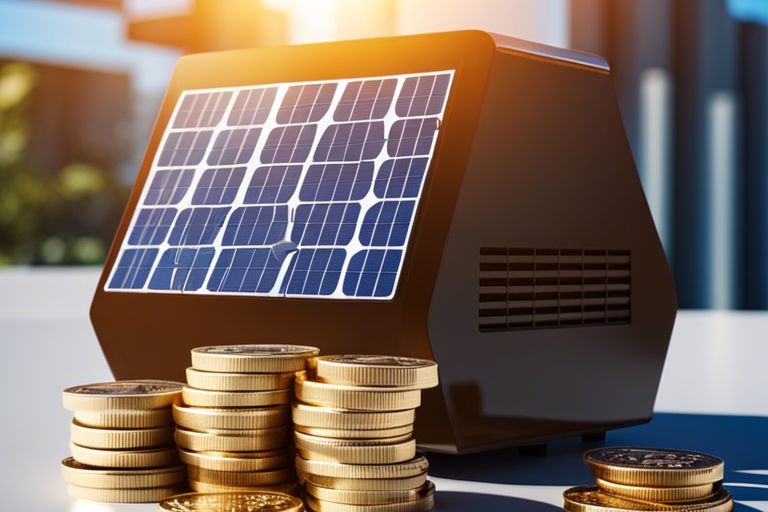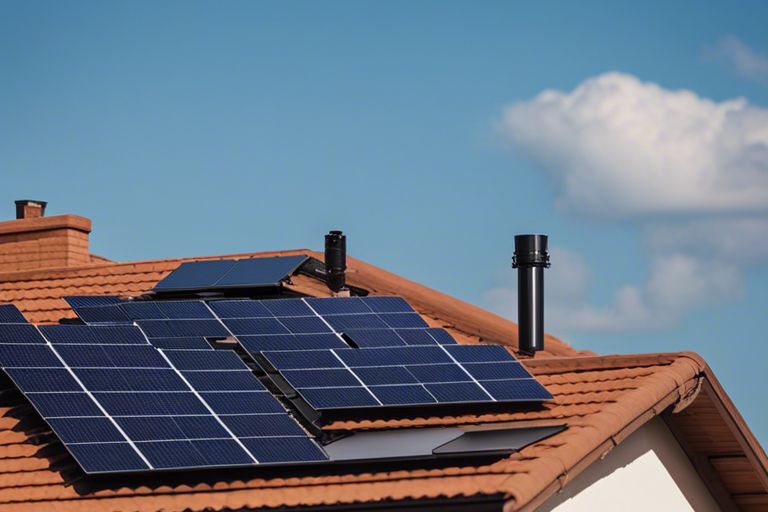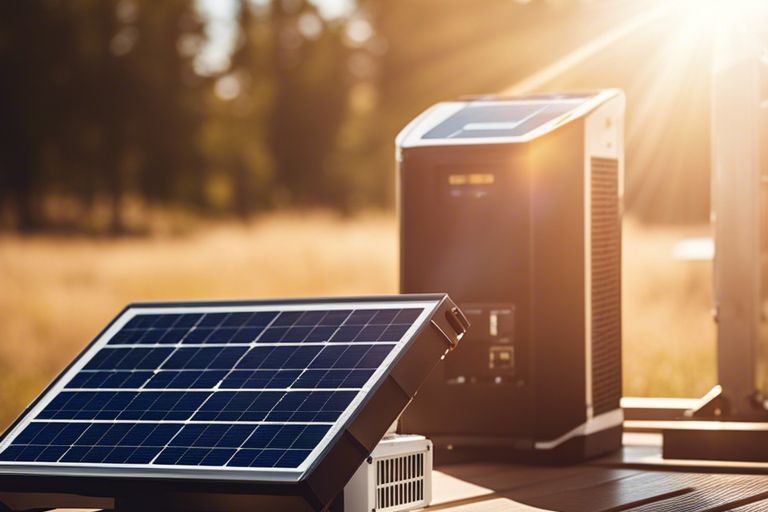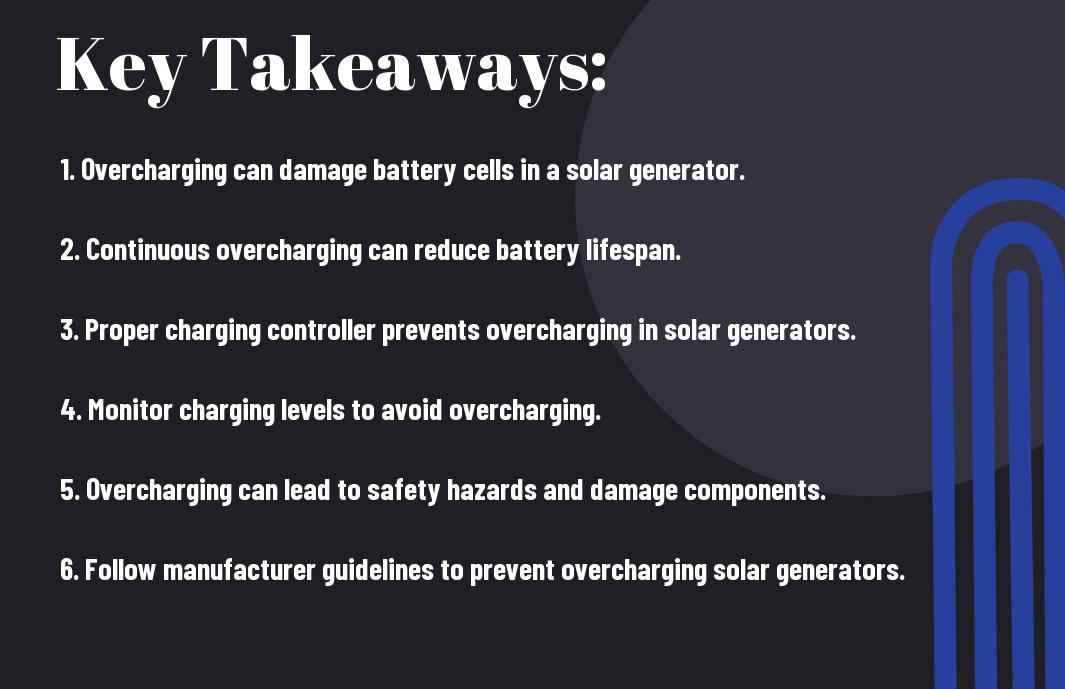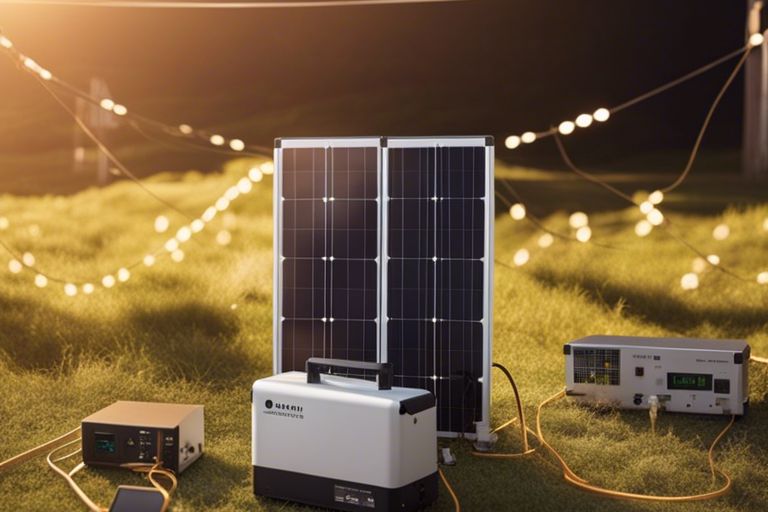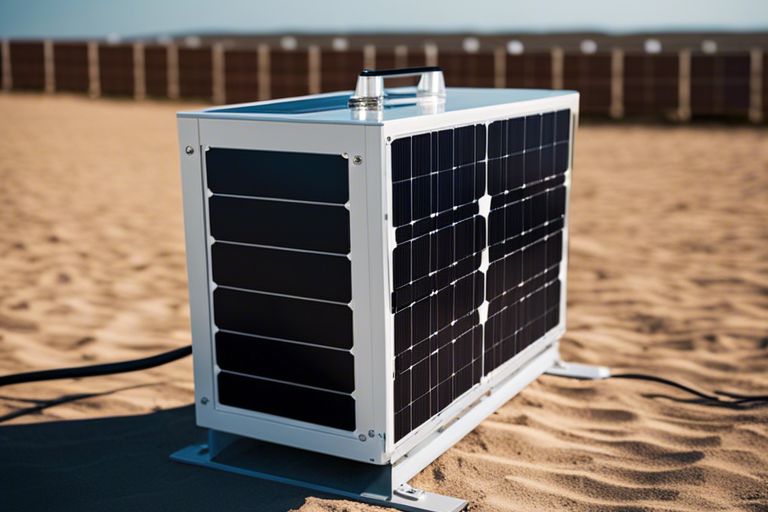You may have wondered if a solar generator is powerful enough to supply electricity to your entire house. In this informative blog post, we will explore the capabilities of solar generators and discuss whether they can effectively meet the energy needs of your home. Understanding how a solar generator works and its limitations can help you make an informed decision on whether it is a suitable option for powering your household.
Key Takeaways:
- Solar generators can power a house: A properly sized and well-designed solar generator system can provide enough power to run necessary appliances and electronics in a house.
- Energy efficiency is key: To effectively power a house with a solar generator, it’s important to prioritize energy-efficient appliances and devices to maximize the available power.
- Battery storage is crucial: Including a good battery storage system in a solar generator setup is necessary for ensuring uninterrupted power supply, especially during periods of low sunlight or at night.
What is a Solar Generator?
While you may be familiar with traditional generators that require fuel to operate, a solar generator harnesses the power of the sun to generate electricity. Essentially, it is a device that converts sunlight into electrical energy that can be used to power various electronic devices and appliances in your home.
Definition and Principle
An necessary component of a solar generator is the solar panels, which contain photovoltaic cells that capture sunlight and convert it into electricity through the photovoltaic effect. This generated electricity is then stored in a battery for later use when the sun is not shining. The principle behind a solar generator is to provide a clean and renewable source of energy that is sustainable and environmentally friendly.
Types of Solar Generators
An important consideration when it comes to solar generators is the type of generator that best fits your needs. There are two main types of solar generators: portable solar generators and whole house solar generators. Portable solar generators are smaller units that are easy to move around and are ideal for camping, outdoor activities, or as a backup power source. On the other hand, whole house solar generators are larger systems designed to power an entire household and can be connected to your existing electrical system for seamless integration.
Perceiving the differences between these types of solar generators can help you determine which one is the most suitable for your energy needs.
| Generators | Types |
|---|---|
| Portable Solar Generators | Small, lightweight, ideal for outdoor use or as a backup power source. |
| Whole House Solar Generators | Larger systems, designed to power an entire household, can be integrated into existing electrical systems. |
Types of Solar Generators
When considering a solar generator for your home, it’s important to understand the different types available and their respective capabilities. Portable solar generators are compact, lightweight, and easy to transport, making them perfect for camping trips or as emergency backup power. Meanwhile, whole house solar generators are much larger systems that are designed to power your entire home, providing a reliable and sustainable source of energy.
Perceiving the distinctions between these types of solar generators can help you make an informed decision when selecting the right one for your household.
| Generators | Types |
|---|---|
| Portable Solar Generators | Compact, lightweight, ideal for camping or as emergency backup power. |
| Whole House Solar Generators | Larger systems, capable of powering an entire home, providing a sustainable energy solution. |
How Much Power Does a House Need?
Average Energy Consumption
Some factors influence how much power a house needs, such as the size of the home, the number of occupants, the climate in which you live, and the energy efficiency of your appliances. On average, a typical American home uses about 900 kWh per month, which translates to around 30 kWh per day.
Peak Power Demand
One important aspect to consider is the peak power demand of your household. This refers to the maximum amount of power needed at any given moment. While your average energy consumption may be around 30 kWh per day, your peak power demand could be much higher, especially during periods when multiple appliances are running simultaneously. For example, turning on the air conditioner, oven, and washing machine at the same time can significantly increase your peak power demand.
Any solar generator system you consider should be able to meet not only your average energy consumption but also your peak power demand to ensure uninterrupted power supply when you need it the most.
Demand for power varies throughout the day, with peak times typically in the morning as people wake up and in the evening when they return home from work. Understanding your household’s energy usage patterns can help you size a solar generator system that meets your specific needs.
Can a Solar Generator Meet a House’s Power Needs?
All Can a Solar Generator Power a House? calculations need to start with assessing your home’s energy requirements. Calculating the power needed to run your house involves considering factors like the number of appliances, their energy consumption, and the duration for which they’re used daily. By analyzing your energy usage patterns, you can estimate the amount of power your solar generator must be capable of producing to meet your daily needs.
Calculating Energy Requirements
Calculating your home’s energy requirements involves summing up the power consumption of all your appliances and devices to determine the total amount of energy needed daily. By identifying your energy hogs and the items that are used constantly, you can estimate the minimum power output your solar generator should deliver to support your household’s needs effectively.
Sizing a Solar Generator
Houses come in different sizes and have varying energy needs, making it crucial to appropriately size your solar generator. By selecting a solar generator with the right capacity, you can ensure it can handle your home’s power demand efficiently. Factors such as sun exposure, battery capacity, and inverter capability should be considered to determine the ideal size of the solar generator for your residence.
Power outages can be disruptive and frustrating. To avoid being left in the dark, make sure you carefully evaluate your energy requirements and choose a solar generator size that matches your needs. With the right-sized solar generator, you can enjoy reliable power supply while reducing your environmental impact.
Factors Affecting a Solar Generator’s Ability to Power a House
Despite the increasing popularity of solar generators for powering homes, several factors can affect their ability to effectively meet your household energy needs. Here are some key considerations to keep in mind:
Solar Panel Efficiency
Panel efficiency plays a crucial role in determining how much energy your solar generator can produce. High-efficiency solar panels can convert more sunlight into electricity, maximizing the power output of your system. When considering a solar generator for your home, opt for panels with a higher efficiency rating to ensure optimal performance.
- Panel efficiency directly impacts the overall output of your solar generator.
Battery Capacity and Type
Affecting how much energy you can store for later use, the battery capacity and type are imperative factors in powering your home with a solar generator. Lithium-ion batteries are popular for their high energy density and longer lifespan compared to lead-acid batteries. Additionally, a larger battery capacity allows you to store more energy to cover periods of low sunlight or high energy consumption.
- Opt for lithium-ion batteries for better performance and longevity.
The battery capacity determines how much energy can be stored and used when sunlight is not available or during peak energy demands. By choosing a solar generator with a larger battery capacity, you can ensure a more reliable power supply for your household needs.
Inverter Quality and Efficiency
Capacity
The quality and efficiency of the inverter in your solar generator can impact how effectively it converts DC power from the solar panels into AC power for your home appliances. A high-quality inverter ensures minimal energy loss during the conversion process, maximizing the electricity available for your use. When choosing a solar generator, prioritize models with efficient and reliable inverters to optimize your home’s power supply.
- Quality
When considering the inverter, quality matters. A reliable inverter will ensure that the energy generated by your solar panels is efficiently converted for use in your home, reducing waste and maximizing the effectiveness of your solar generator.
In brief, understanding these factors and their impact on your solar generator’s performance can help you make informed decisions when choosing a system to power your house sustainably. By considering panel efficiency, battery capacity, and inverter quality, you can build a solar generator that meets your energy needs efficiently and effectively.
Real-World Examples and Applications
Off-Grid Homes
Not sure if a solar generator can truly power a house? Think again! Many off-grid homes rely solely on solar generators to meet their energy needs. These homes are not connected to the main power grid and use solar panels to capture energy from the sun. The stored energy in batteries is then used to power appliances, lights, and other electrical devices in the home.
On top of providing reliable electricity, solar generators for off-grid homes are environmentally friendly and can help homeowners reduce their carbon footprint. With advancements in technology, these systems have become more efficient and affordable, making them a viable option for those looking to live off the grid.
Grid-Tied Systems
Not ready to go completely off the grid? You can still benefit from solar generators with grid-tied systems. These setups allow you to generate electricity from solar panels while remaining connected to the main power grid. This means that any excess energy produced by your solar generator can be fed back into the grid, potentially earning you credits or reducing your utility bills.
Applications of grid-tied systems are versatile – you can use them in residential, commercial, or even industrial settings. It’s a convenient way to harness solar power without worrying about energy storage or system reliability. With grid-tied systems, you can enjoy the benefits of solar energy while maintaining a connection to the traditional power grid.
Challenges and Limitations
Intermittent Power Supply
Supply: Unlike traditional electricity grids that provide continuous power supply, solar generators rely on sunlight to generate electricity. This means that your house may experience intermittent power supply, especially during cloudy days or at night when there is no sunlight to fuel the generator. While battery storage can help to some extent, it may not always be sufficient to power your entire household for extended periods without sunlight.
High Upfront Costs
Power: One of the main challenges of using a solar generator to power your house is the high upfront costs associated with purchasing and installing the system. While solar energy is ultimately a cost-effective solution in the long run, the initial investment can be prohibitive for many homeowners. You may need to consider factors such as the size of your house, energy consumption, and the efficiency of the solar generator system when calculating the total costs.
High: To offset the high upfront costs of installing a solar generator for your house, you may explore options such as federal or state incentives, tax credits, or leasing agreements. These financial assistance programs can help make solar power more accessible and affordable for homeowners looking to transition to renewable energy sources.
To wrap up
The article has provided you with information on solar generators and their ability to power a house. You have learned about the different types of solar generators available in the market, the factors to consider when selecting one, and how they can be beneficial for powering your home. It is clear that with the right solar generator size and setup, you can potentially power necessary devices and appliances in your house during power outages or in off-grid locations.
Therefore, while a solar generator may not be able to power an entire house with high energy demand, it can certainly provide a convenient and eco-friendly backup power source. By understanding your energy needs, choosing the right solar generator, and optimizing your energy usage, you can effectively harness the power of the sun to keep your home running when needed. So, consider investing in a solar generator to bring a sustainable power solution to your household.
FAQ
Q: Can a solar generator power a house?
A: Yes, a solar generator can power a house by collecting sunlight and converting it into electricity. The power generated can be used to run household appliances and lighting, reducing dependence on the grid.
Q: How much power can a solar generator produce for a house?
A: The amount of power a solar generator can produce for a house depends on the size of the system and the amount of sunlight it receives. On average, a residential solar generator can produce enough electricity to cover a significant portion of a household’s energy needs.
Q: What are the benefits of using a solar generator to power a house?
A: Some benefits of using a solar generator to power a house include reduced electricity bills, lower carbon footprint, increased energy independence, and potential government incentives or rebates for using renewable energy sources.
Q: What happens if there is no sunlight to power the solar generator?
A: If there is no sunlight to power the solar generator, stored energy in batteries can be used as a backup source. In cases of extended periods without sunlight, a backup power source like the grid or a generator may be needed for continuous power supply.
Q: How long do solar generators last when used to power a house?
A: The lifespan of a solar generator used to power a house can vary depending on factors such as quality of components, maintenance, and usage patterns. On average, a well-maintained solar generator can last 25 years or more, providing reliable power for an extended period.






